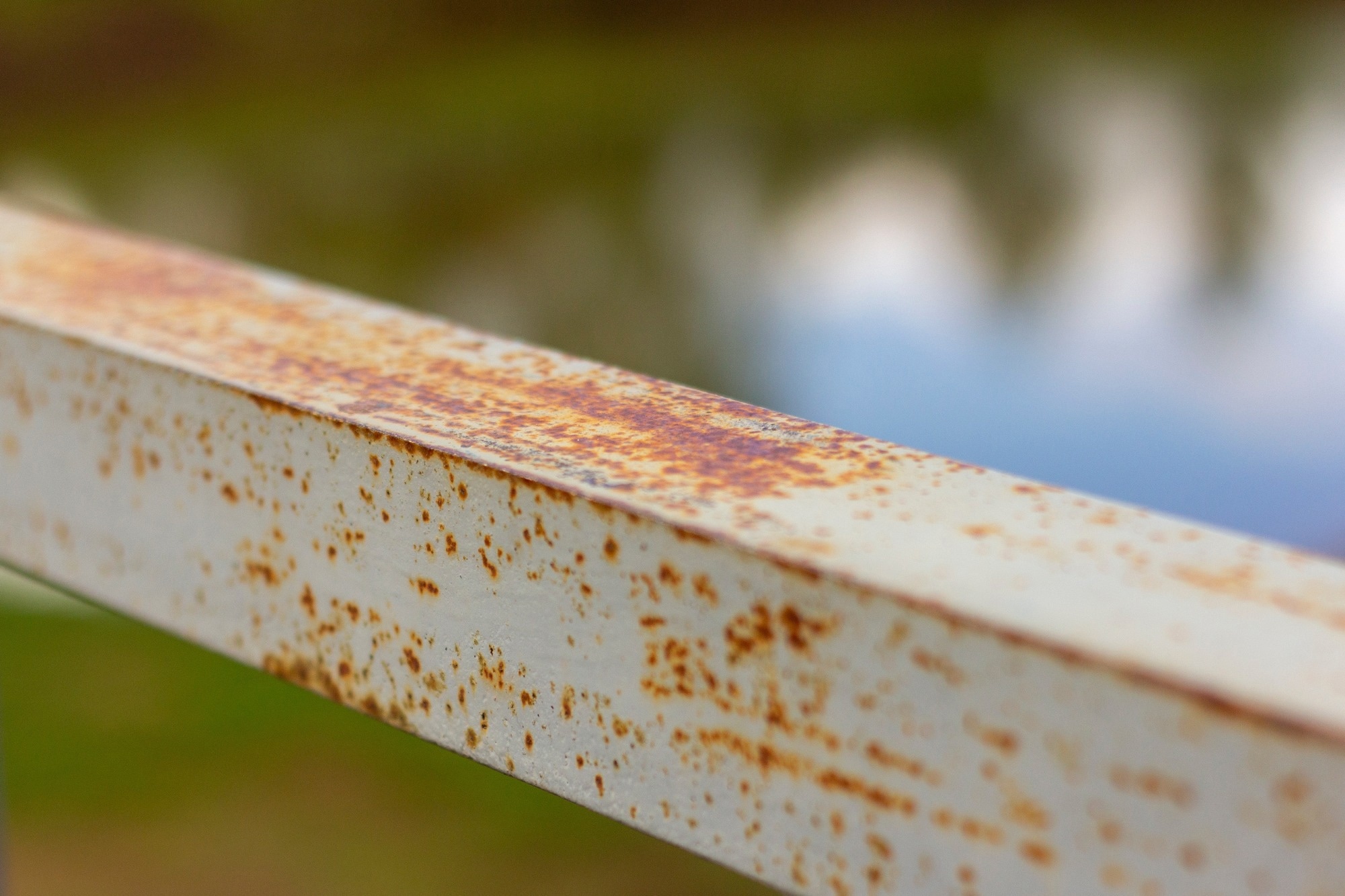Researchers have developed a dual-layer coating system combining an N-heterocyclic carbene (NHC) monolayer with a crosslinked polymer network (CPN), achieving over 99 % corrosion protection for iron in saline environments.
 Study: Self‐Assembled Monolayer of N‐Heterocyclic Carbene as a Primer in a Dual‐Layer Coating for Corrosion Protection on Iron. Image Credit: Alekcey-Elena/Shutterstock.com
Study: Self‐Assembled Monolayer of N‐Heterocyclic Carbene as a Primer in a Dual‐Layer Coating for Corrosion Protection on Iron. Image Credit: Alekcey-Elena/Shutterstock.com
A recent study published in the Angewandte Chemie International Edition presents this new strategy for protecting iron from corrosion. The researchers demonstrated that a self-assembled monolayer (SAM) of NHC, electrodeposited onto iron foil, can serve as a primer for a crosslinked polymer network layer. Together, these layers significantly reduced corrosion in a saline environment.
Background
Iron is a cornerstone material in construction, but it's notoriously vulnerable to rust when exposed to air and moisture, leading to structural degradation and costly maintenance. Traditional surface coatings, including organic and inorganic monolayers formed from diazonium salts or thiols, have been used to address this issue. However, these coatings often fall short due to limited thermal and chemical stability.
To reinforce protection, thin polymer films can be grafted onto metal surfaces, either by attaching reactive-end-group polymers or directly synthesizing polymer chains on functionalized surfaces. Yet, these coatings typically exhibit low surface density and poor adhesion to iron, making them unreliable under harsh conditions.
To overcome these shortcomings, the research team introduced a dual-layer approach using an NHC SAM as a primer beneath a robust polymer coating.
Methods
The study used 1,3-dimethylbenzimidazolylidene (benzNHC), which was electrodeposited onto iron using tetraethylammonium tetrafluoroborate as the electrolyte. A CPN layer was then added via spin-coating with bisphenol-A–ethoxylate diacrylate monomers and a photoinitiator (diphenyl(2,4,6-trimethylbenzoyl)phosphine oxide).
To analyze the coating’s effectiveness, the researchers employed focused ion beam techniques to isolate coated specimens and determine film thickness. An iridium layer was applied to protect the polymer during milling. Scanning electron microscopy (SEM) helped assess the coating structure, both with and without the NHC monolayer.
Corrosion resistance was evaluated using potentiodynamic polarization measurements in 3.5 wt.% NaCl solution at 25 °C. Tafel plots were recorded for four sample types: bare iron, CPN-coated iron, benzNHC-coated iron, and the dual-layer combination.
Results and Discussion
The benzNHC monolayer alone showed similar corrosion current density to bare iron but with a slightly improved corrosion potential, suggesting delayed corrosion onset. The CPN-only layer provided minimal protection due to weak adhesion.
In contrast, the dual-layer system showed a significant drop in both cathodic and anodic currents - over two orders of magnitude lower than bare iron - indicating strong resistance to corrosion. Tafel plots also showed a clear shift toward more noble potentials in the dual-layer sample.
SEM analysis confirmed a thicker polymer film (11.8 µm) formed on iron with the NHC monolayer, compared to just 6.6 µm without it. Films applied directly onto bare iron tended to detach, highlighting the importance of the NHC SAM in anchoring the polymer layer. The high surface density of NHC molecules provided ample active sites for polymerization, resulting in a more cohesive and durable coating.
While some shrinkage of the polymer layer was observed in saline solution, attributed to ion–polymer interactions, the film remained intact, underscoring the stabilizing role of the NHC primer. Further investigation suggested that the imidazole ring within the NHC compound played a central role in binding the polymer, while the benzyl group contributed to surface stability through intermolecular interactions.
Conclusion
This work demonstrates that incorporating an NHC-based SAM as a primer beneath a crosslinked polymer film forms a highly effective dual-layer system for corrosion protection on iron. The combination achieved a corrosion inhibition efficiency of 99.6 % under simulated harsh conditions.
The study also found that simpler NHC SAMs offer some protective benefit, though not as effective as benzNHC. The enhanced performance of benzNHC appears linked to its ability to both anchor to the surface and chemically coordinate with the overlying polymer layer.
Journal Reference
Amar, L. et al. (2025). Self‐Assembled Monolayer of N‐Heterocyclic Carbene as a Primer in a Dual‐Layer Coating for Corrosion Protection on Iron. Angewandte Chemie International Edition. DOI: 10.1002/anie.202422879, https://onlinelibrary.wiley.com/doi/10.1002/anie.20242287
Disclaimer: The views expressed here are those of the author expressed in their private capacity and do not necessarily represent the views of AZoM.com Limited T/A AZoNetwork the owner and operator of this website. This disclaimer forms part of the Terms and conditions of use of this website.